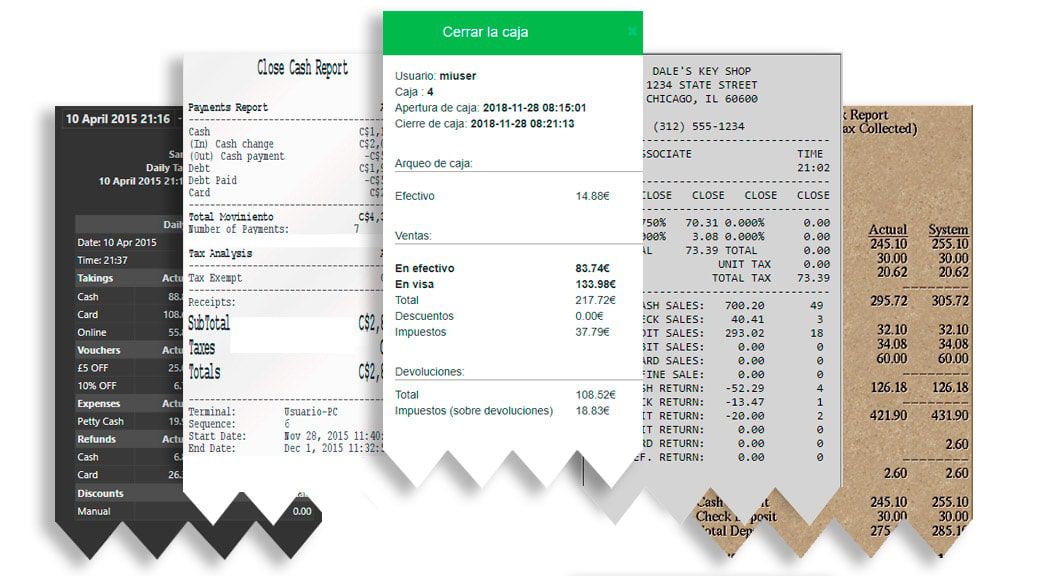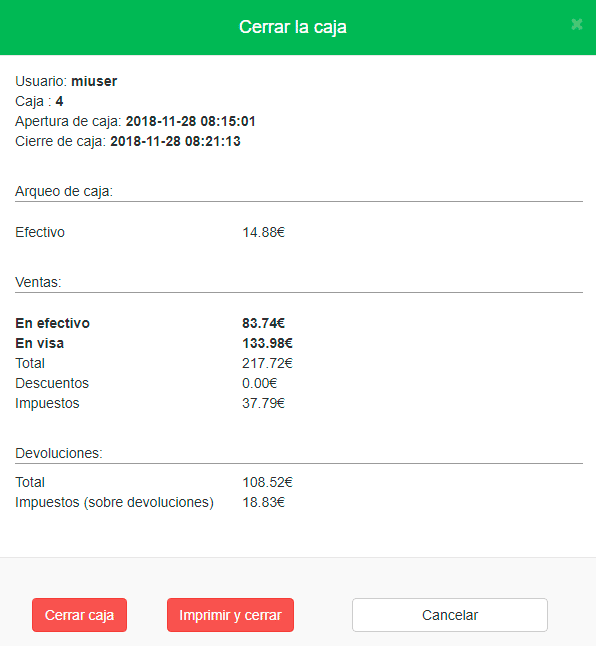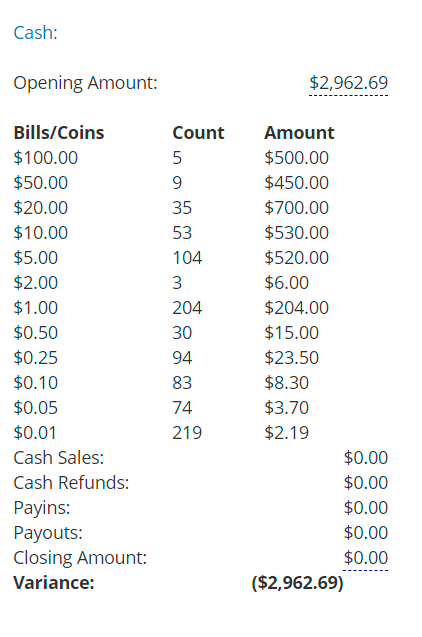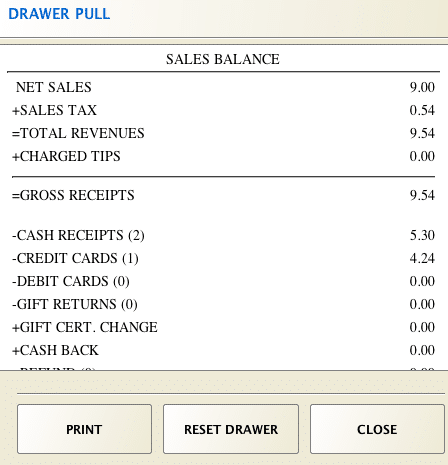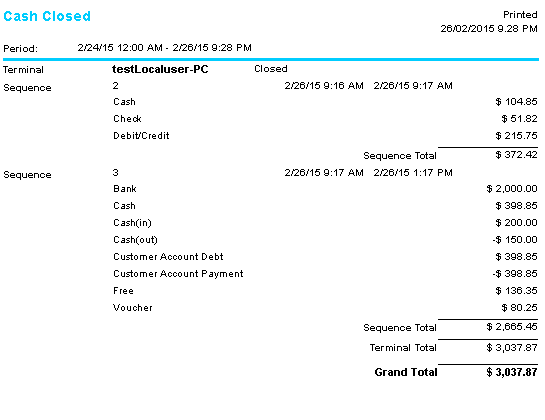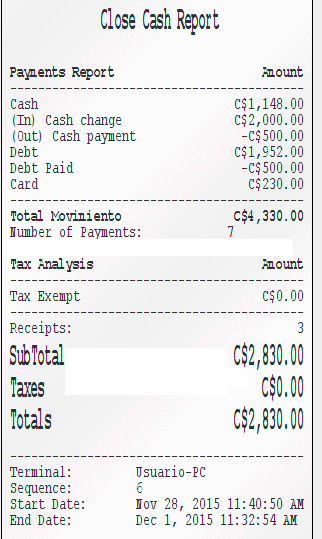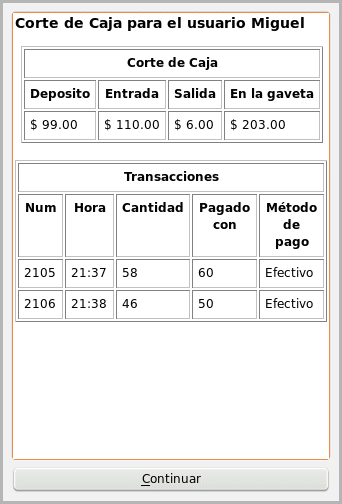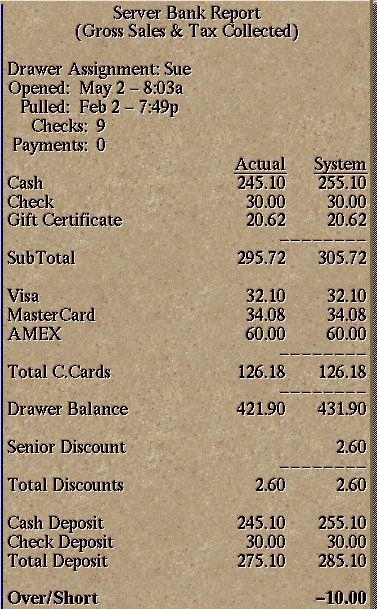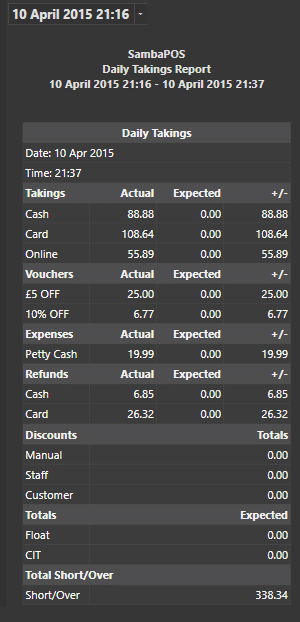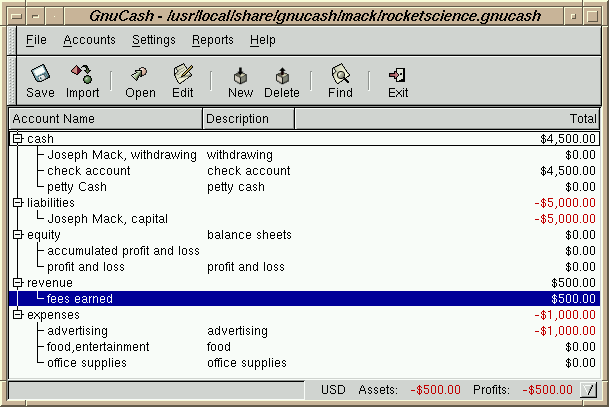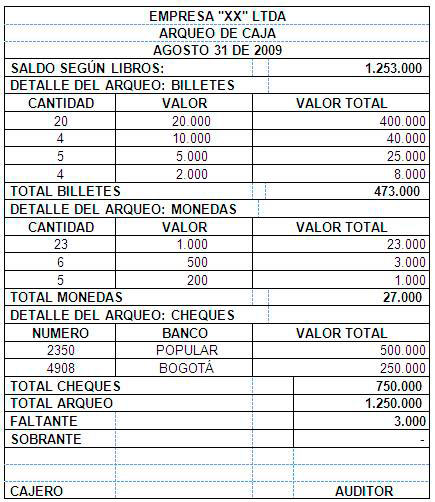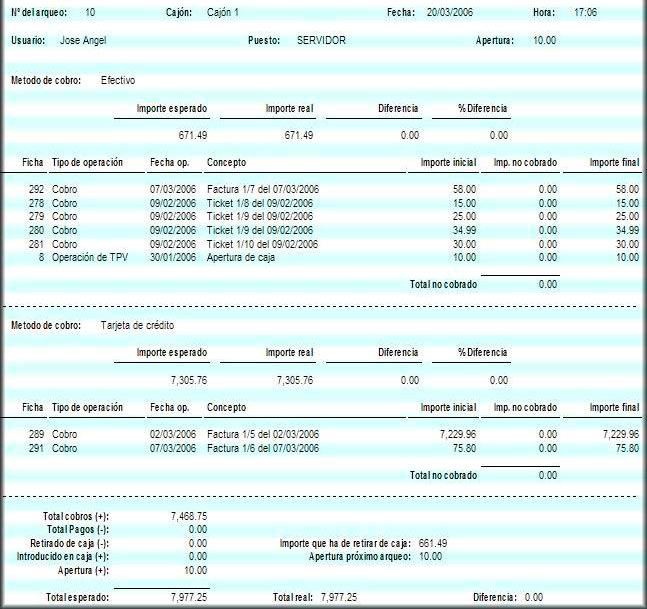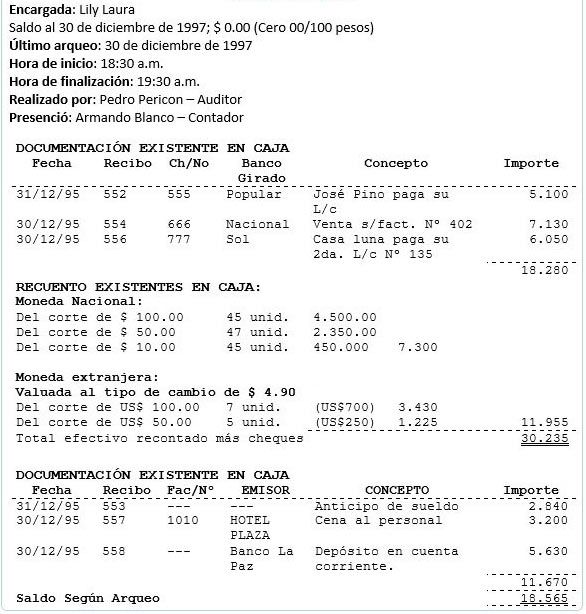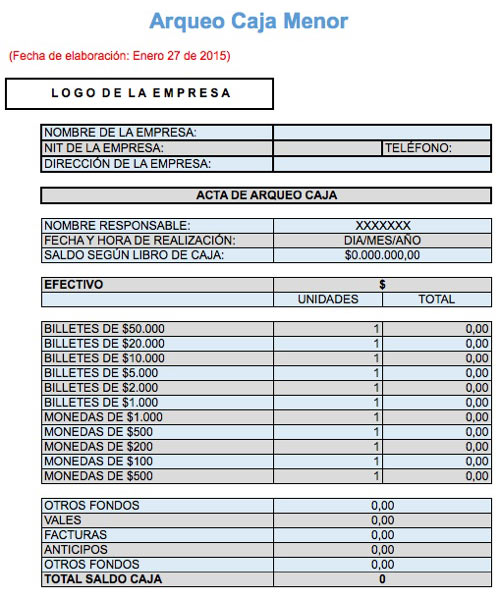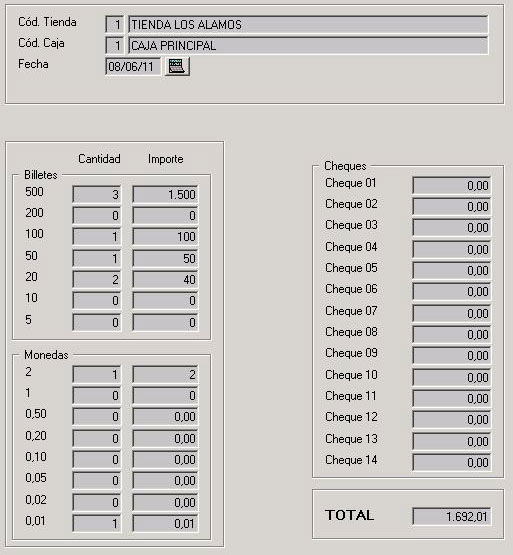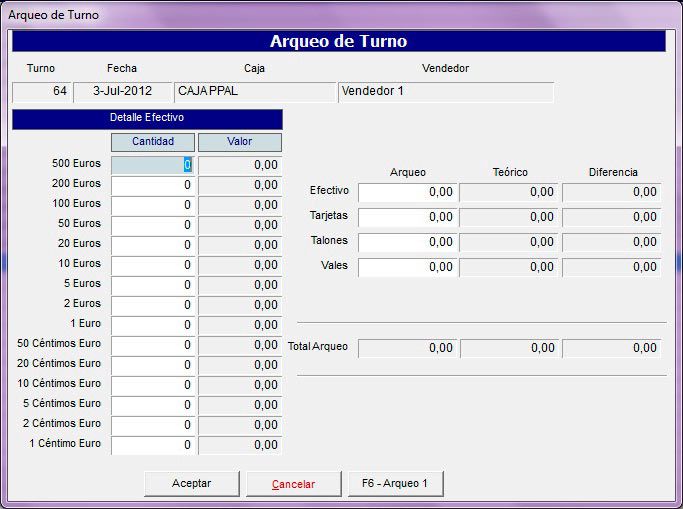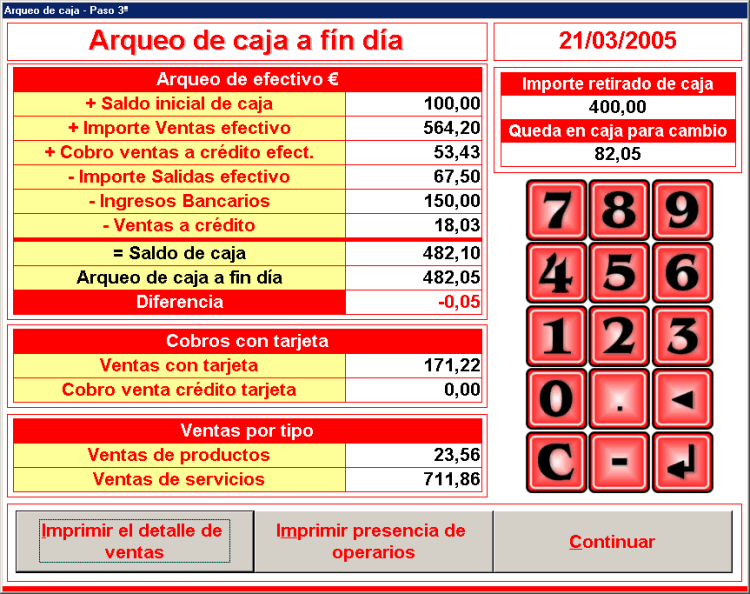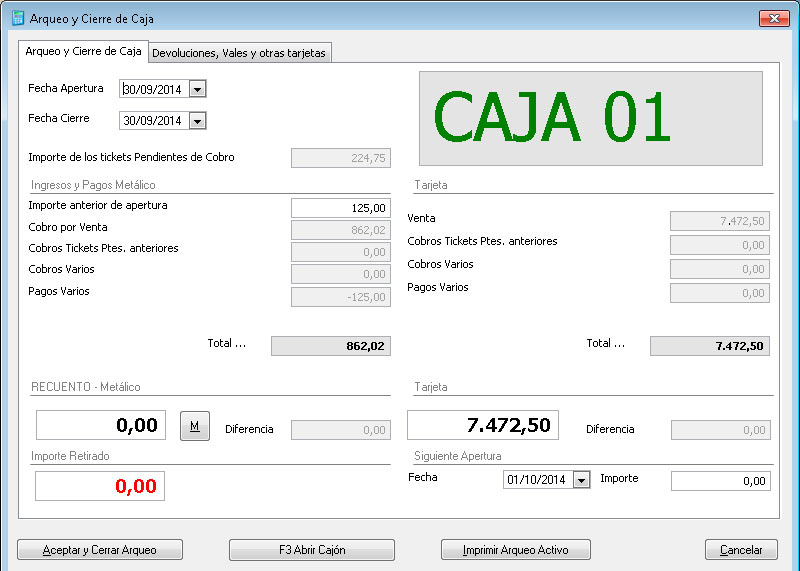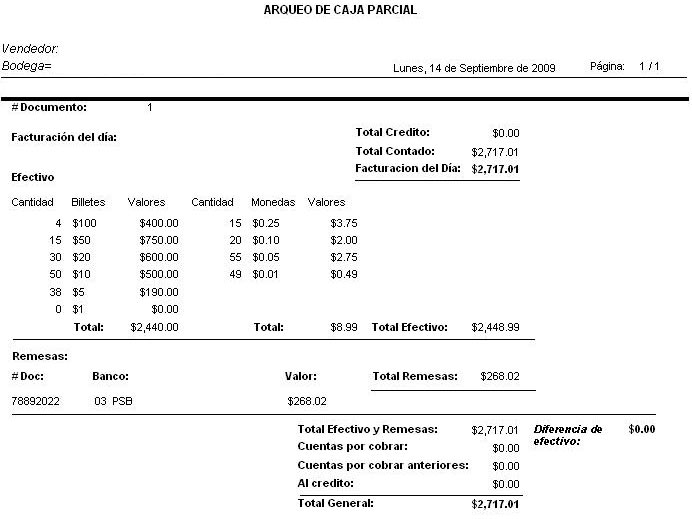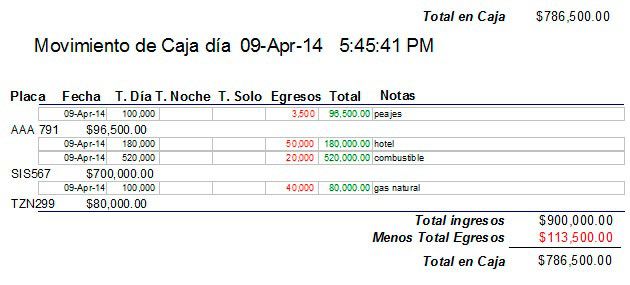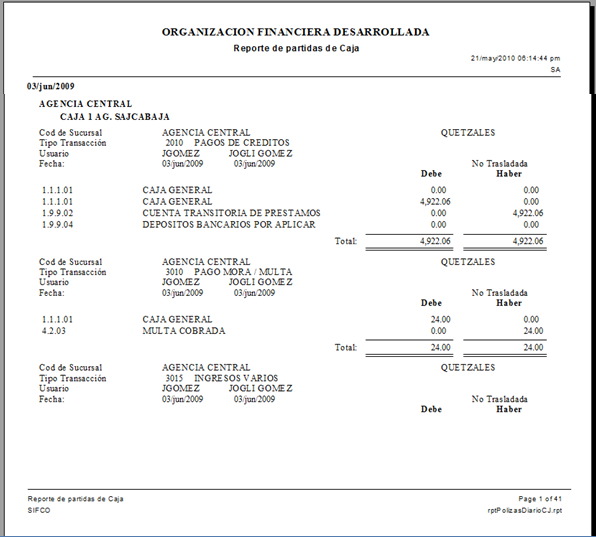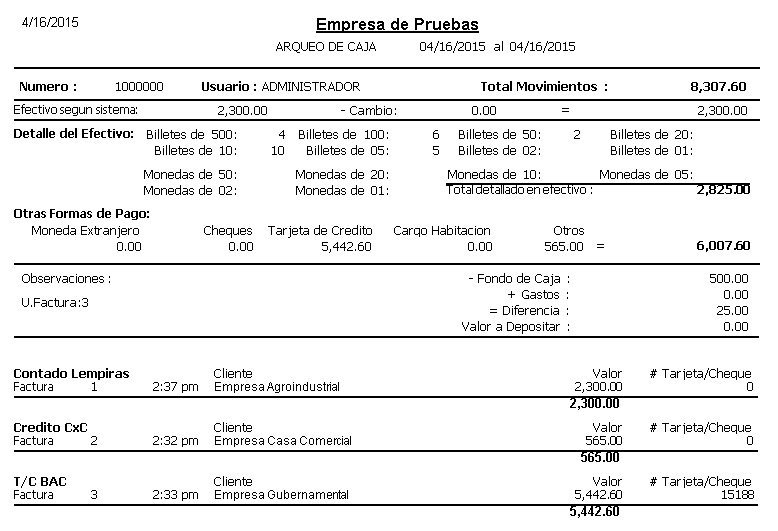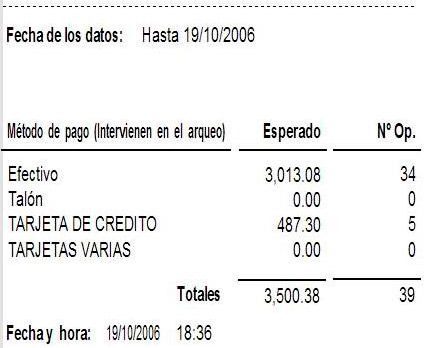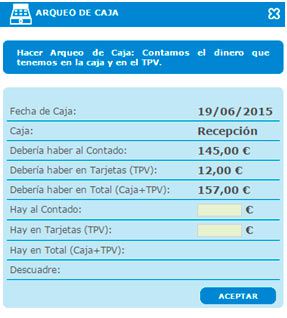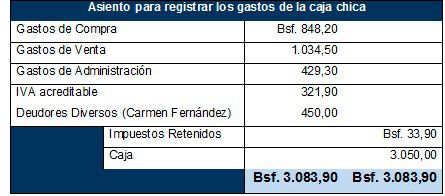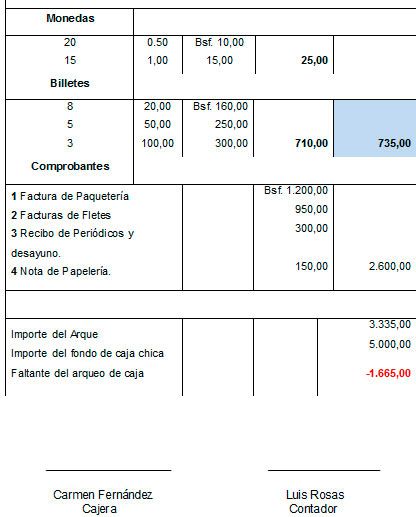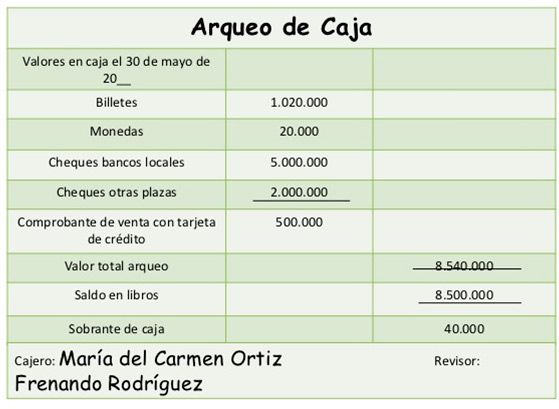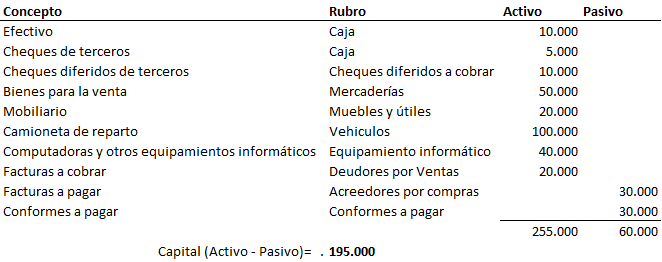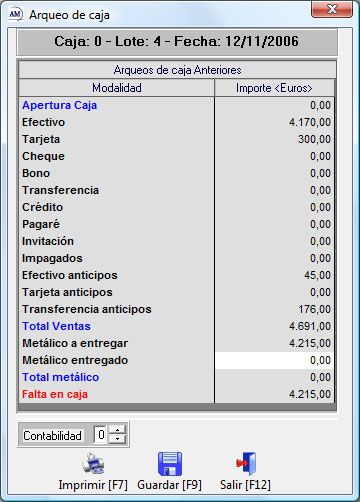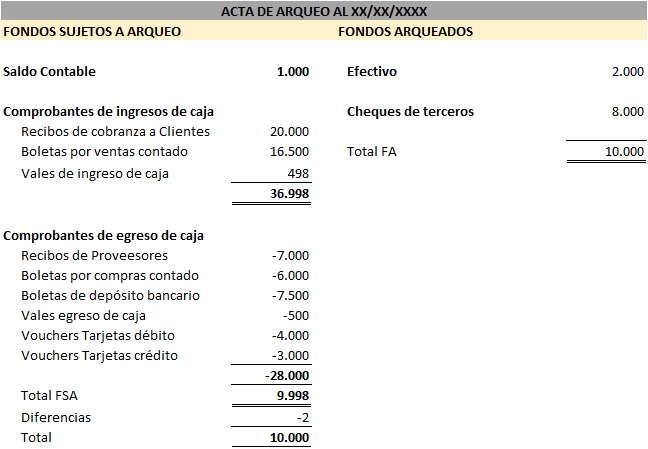The cash count is the operation that culminates a day’s work in a shop, and in which the cash collected is recorded, noting whether the operations have been carried out correctly or whether money is missing. The cash count is an exercise practised by all businesses, from large chains such as Zara to small grocery shops.
What is a cash flow?
The cash count is the balance of cash inflows and outflows during a salesperson’s working day.
Or to put it colloquially, when a salesperson finishes his working day, he must count all the money received by any method of payment (cash, card, cheques, etc.) and compare the resulting money with the amount of money that the POS programme has indicated that there should be (this data is called the accounting count).
How is a cash flow carried out?
The cash flow statement is carried out in 3 simple steps:
- We count all cash on hand, and cash received by card, cheque or other payment methods.
- We ask the management software (POS software) that we are using in our shop to indicate the money that should be there.
- We draw a positive conclusion (the balance sheet is correct) or a negative one (money is missing).
The following conclusions can be drawn from the cash flow statement:
- Positive. The accounting audit and the physical audit give the same result.
- Negative. Money is missing, counterfeit banknotes are present or the POS has not been operated correctly. In any case, the causes must be ascertained and noted.
Possible causes of a negative cash flow statement:
- Incorrectly noted return. The salesperson has made a mistake in writing down the method of return to a customer. A return can be made in cash, by bank, by a ticket for the value of the purchase, for a similar product…
- Mis-selling. More units may have been recorded as sold than have actually been sold.
- Theft.
- The money has been miscounted.
Practical examples of Cash Drawings
There are many cash register formats, and to give you some inspiration from some of the ones we have selected 30 cash register receipts from different cash register management software. If you are worried that your cash register closing is not adequate, by looking at these models you will be able to see how most shops close their tills.
If you pay attention, the older tpv’s issue a cash count ticket that is much more full of information and cluttered with data that does not meet the immediate objective: to know how much money there should be and how much there really is. On the other hand, the more modern point of sale give only the most important information and as succinctly as possible to make life easier for the person in charge of counting.
Another feature of the most modern POS software is that it gives you the option of printing or not printing out the cash receipt. This is because printing is a practice that is becoming increasingly less common than storing this data online and retrieving it from a computer rather than in physical format.
Lastly, POS systems usually provide the opportunity to print the cash register statements on paper, in pdf or excel format. However, the trend for some time, but more predominantly in 2021, is to store this information in the cloud.
1- Catinfog
The Catinfog cash register is the one we can tell you the most about, as we have designed it ourselves. It shows only what it should show. If you haven’t made sales with a certain payment method or returns, it simply doesn’t show it. It is designed to show just enough and very well ordered. One feature it has that most POS programs don’t have is that it differentiates sales and returns from the cash that should be in the till.
